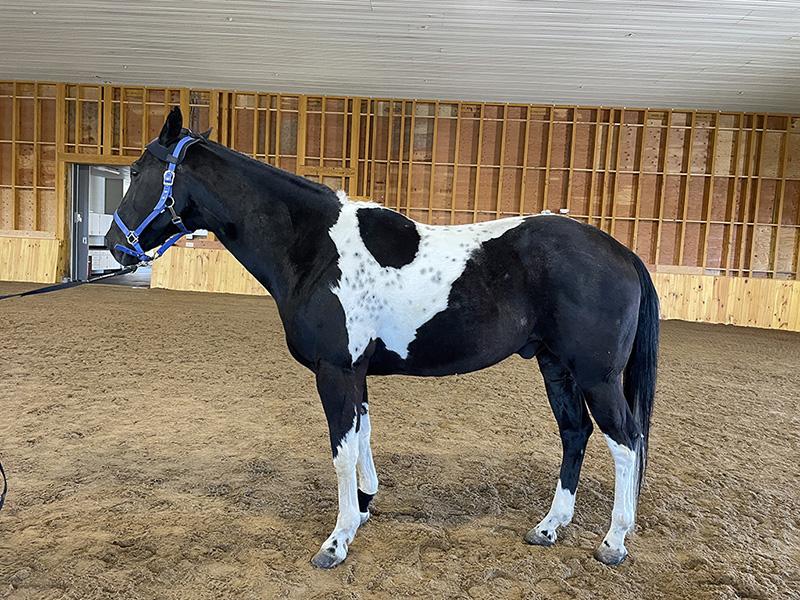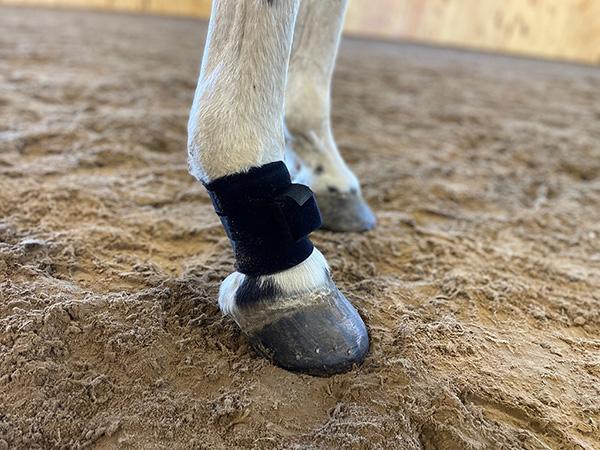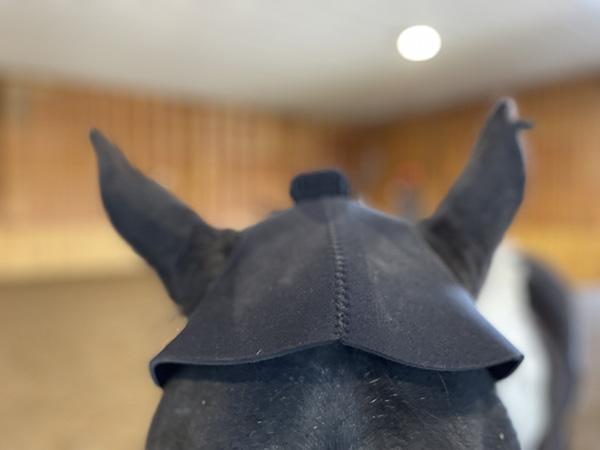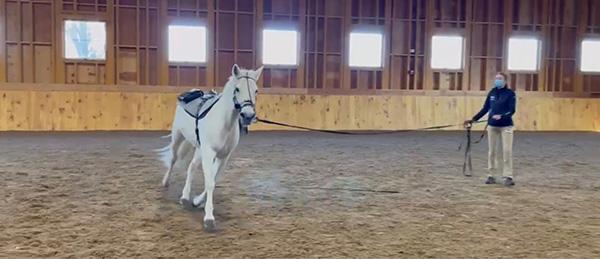-
About
- Leadership & Faculty
- News & Events
-
Academics
- Graduate
- Advanced Clinical Training
- Continuing Education
- Academic Offices
-
Student Life
-
Research
-
Hospitals & Clinics
- Emergency Care
- Hospital Services
-
Community Outreach
- Volunteer
New Sports Medicine Equipment for Tufts Equine Center
State-of-the-art technologies help to diagnose subtle lameness and respiratory disorders

“When horses are unwell, we have to use circuitous paths to figure it out because our patients can’t talk to us,” says Thomas Jenei, V02, director of the Hospital for Large Animals (HLA) at Cummings School of Veterinary Medicine at Tufts University.
Tufts Equine Center at HLA has the largest staff of board-certified specialists in New England and uses new and innovative technologies to help horses return to optimal health and performance. The Equine Center recently acquired two new major pieces of equipment to make those paths less circuitous: the Equinosis Lameness Locator System and the Optomed Dynamic Respiratory Scope. Both will be used in the Equine Sports Medicine Service, headed by Kristin Bubeck and José García-López, to assess equine lameness and respiratory disorders.
“Drs. García-López and Bubeck spend much time watching horses walk, trot, canter—to see sometimes obvious and sometimes subtle changes in how the horse moves,” Jenei explains. Subtle lameness can be difficult to pinpoint. Doctors typically use a bone scan test, injecting a radioactive drug that circulates through the bloodstream and accumulates in affected areas of bone inflammation, then picked up by a special camera. “The horse needs to be hospitalized for this service. It’s very safe and effective, but not always convenient.”
The Equinosis Lameness Locator System can noninvasively detect subtle lameness and also measure the effectiveness of treatment. While a horse is in motion, the Lameness Locator tracks asymmetries in its movements to determine if one or more legs is demonstrating lameness. Sensors are placed on the horse’s right front leg (monitoring when it is on the ground), behind the ear (measuring front leg lameness), and over the pelvis (for hind leg lameness).
“All three sensors collectively assess if the horse is moving evenly or symmetrically. If so, then the horse is comfortable, and if not symmetrical, then the inference is that something is sore or painful,” says Jenei. “It doesn’t tell you which joint is the problem but helps direct us to the limb not moving the way it should.”
The doctors then narrow down the area to the joint affected, eliminating the need for the horse to either stay overnight or receive injections of the radioisotope needed for a bone scan.
“It doesn’t completely replace the bone scan but provides the Sports Medicine team with another option for subtle lameness assessments,” Jenei contends.
Bubeck explained that the Lameness Locator can additionally measure the change in degree of lameness pre- and post-treatment, allowing doctors to objectively evaluate the effectiveness of treatment. Because of this capability, it can be used for research purposes and for teaching students.
Respiratory issues can also negatively impact a horse’s performance. When a horse struggles with airflow, doctors use an endoscope, a camera inserted into the horse’s nose, to view its upper respiratory tract. The camera is attached to a tall, wheeled cart with a television screen (to project images from the camera) and other pieces of equipment; therefore, the endoscope can only be used when a horse is standing still or on a treadmill.
“Unless it’s a significant abnormality, it’s hard to identify what’s going on if the horse is standing still,” says Jenei. “It may not be apparent unless the horse is moving, when all the pieces are actually working together.”
A treadmill comes with its own set of limitations—a horse needs to be trained to use it, there’s risk of injury, and the horse cannot have a rider.
What’s unique about the Optomed Dynamic Respiratory Scope is its size and portability.
“With Optomed, horses can work more normally and don’t need a treadmill. We can examine the horse while it’s being ridden. There are challenges and risks to using a treadmill that Optomed mitigates,” Jenei shares.
The Optomed transmitter is light and fits in a horse’s saddlebag while the camera attaches along the bridle, Bubeck explains. The endoscope extends out of the bag, along the neck, and into the nose. The images taken by the camera appear on a tablet. “The Optomed is easier to use and less stressful for the horse, which is important,” she adds.
Both the Lameness Locator and the Optomed Scope bring more accuracy and options to the doctors in the Sports Medicine Service, and more comfort, convenience, and less risk to the horses.
Department:
Equine Center


